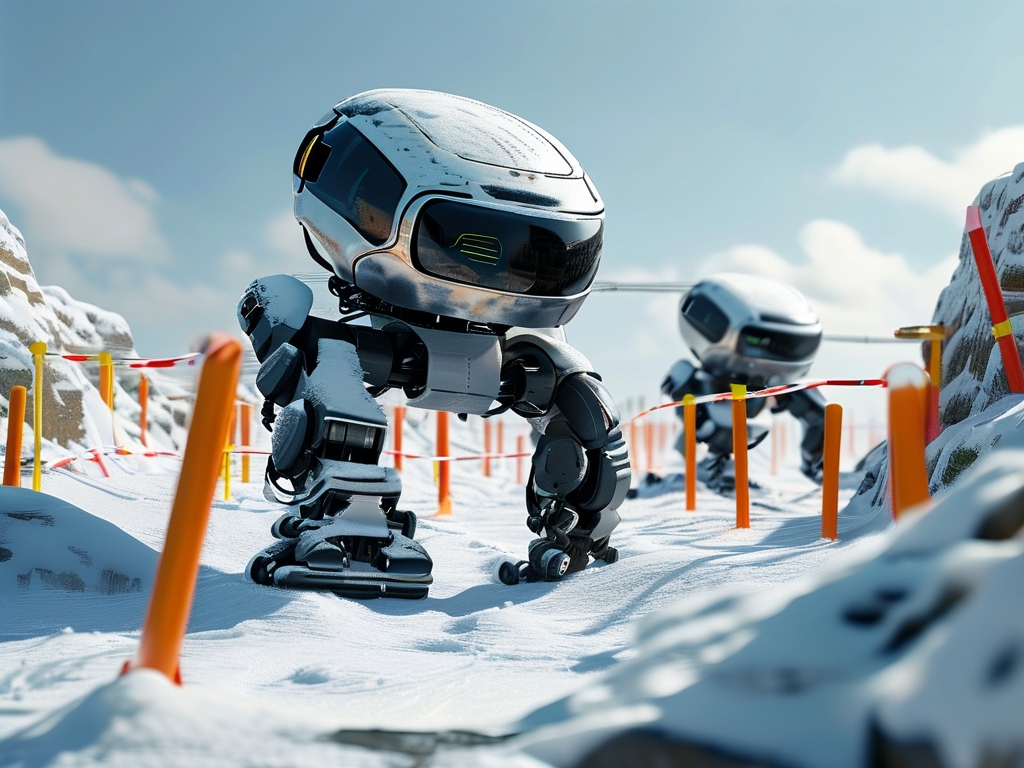In the evolving landscape of autonomous systems, robotic navigation through dynamic environments has reached a critical inflection point. One particularly challenging frontier lies in snowy terrains, where traditional mobility algorithms falter. Recent advancements in robotic pole-threading technology – a specialized maneuver requiring precision pathfinding around obstacles in snow-covered zones – are redefining what machines can achieve in extreme winter conditions.

The Physics of Snowbound Navigation
Snow introduces unique variables: variable friction coefficients, light reflection interference, and transient surface textures. Conventional wheeled robots struggle with these factors, often losing traction or misinterpreting visual cues. Modern solutions employ hybrid sensor arrays combining LiDAR, thermal imaging, and pressure-sensitive footpads. The University of Tromsø's 2023 Arctic Rover prototype demonstrated 89% success in pole-threading tasks by implementing real-time snow density analysis through ground-penetrating radar.
Algorithmic Breakthroughs
At the core of this technology lies adaptive path-planning software. Unlike static obstacle avoidance, snowbound navigation requires predictive modeling of shifting terrain. Researchers at MIT's AutoSnow Lab developed a convolutional neural network that processes snowfall rate, wind direction, and temperature gradients to forecast obstacle displacement. Their open-source framework, GlacierPath v3.2, enables robots to adjust trajectories mid-maneuver – crucial when navigating between closely spaced poles during active snowstorms.
Hardware Innovations
Mechanical design plays an equally vital role. Quadrupedal robots with retractable ice cleats show promise, but bipedal models like Honda's Yukio-9X leverage humanoid balance algorithms for tighter turning radii. The latter's patented "toe-pivot" joint rotates 270 degrees, allowing ice-spike deployment within 0.3 seconds of detecting slip conditions. Field tests in Hokkaido's Shiretoko Peninsula revealed 40% energy savings compared to traditional crab-walking approaches.
Sensor Fusion Challenges
Combining data streams remains problematic. Snow's reflectivity confounds standard LiDAR, while thermal cameras struggle with near-freezing temperatures. The solution? Multi-spectral sensor pods. Boston Dynamics' latest SnowSight module overlays four wavelength bands:
def process_snow_data(thermal, lidar, mmwave, sonar):
fused_data = cross_calibrate(thermal, lidar)
mmwave_corrected = compensate_snow_absorption(mmwave)
return integrate_modalities(fused_data, mmwave_corrected, sonar)
This code snippet illustrates the layered approach required for reliable environment mapping.
Field Applications
Beyond academic interest, practical implementations are emerging. Antarctic supply routes now deploy autonomous convoys using pole-threading tech to navigate crevasse fields. Ski resorts utilize maintenance bots that weave through slalom courses overnight, preparing gates for competitions. Perhaps most crucially, avalanche rescue units report 22% faster response times using pole-navigating drones to deliver emergency payloads.
Ethical Considerations
As with all autonomous systems, questions arise. Should snowbound robots prioritize route efficiency over environmental preservation? The Norwegian Robotics Board recently mandated "snowprint minimization" protocols after autonomous groomers damaged fragile tundra ecosystems. Balancing technological ambition with ecological responsibility remains an ongoing debate.
Future Directions
Next-generation systems aim to eliminate physical markers entirely. Carnegie Mellon's Ghost Poles project uses augmented reality waypoints projected onto snow surfaces, while ETH Zurich explores biomimetic solutions inspired by arctic foxes' snow-traversal techniques. The ultimate goal? Machines that navigate winter landscapes as fluidly as native wildlife, blurring the line between programmed responses and environmental intuition.
This technological arms race in snowy navigation isn't just about conquering harsh climates – it's stress-testing the limits of autonomous decision-making. As robots learn to dance between snow poles with increasing grace, they're not merely avoiding obstacles. They're rewriting the rulebook for machine-environment interaction in Earth's most unforgiving habitats.









